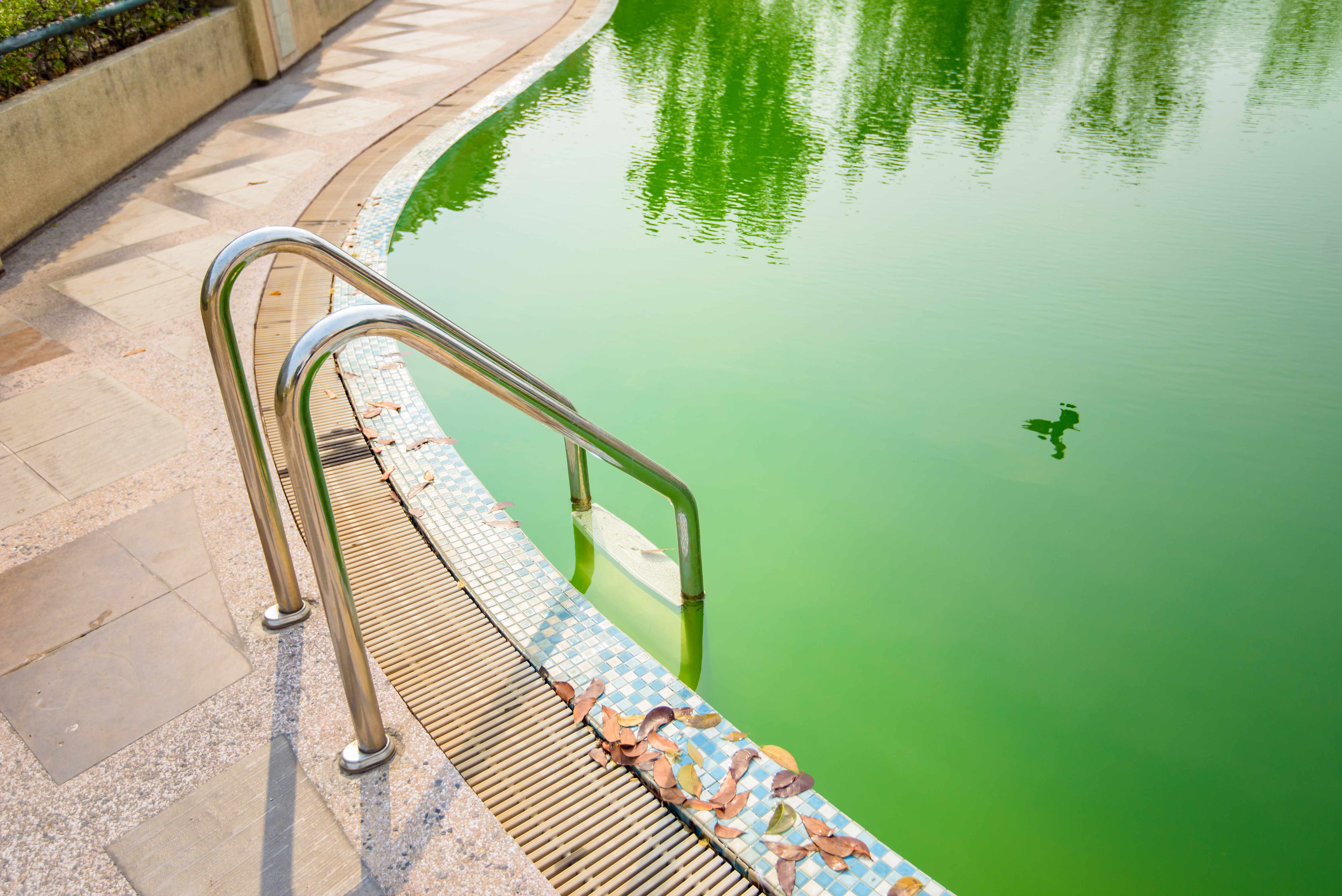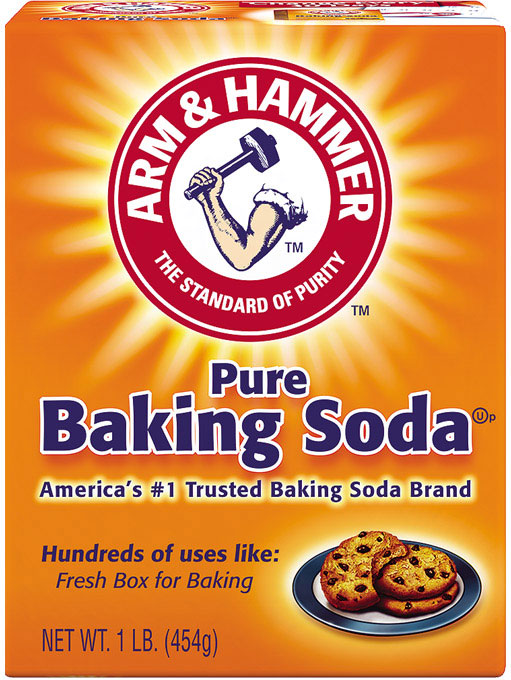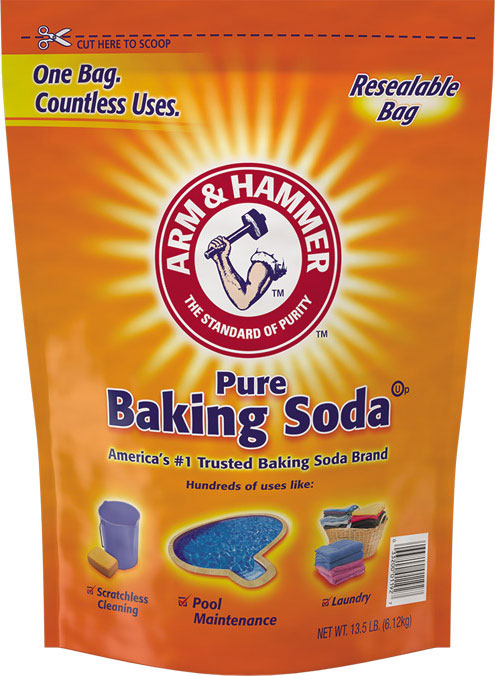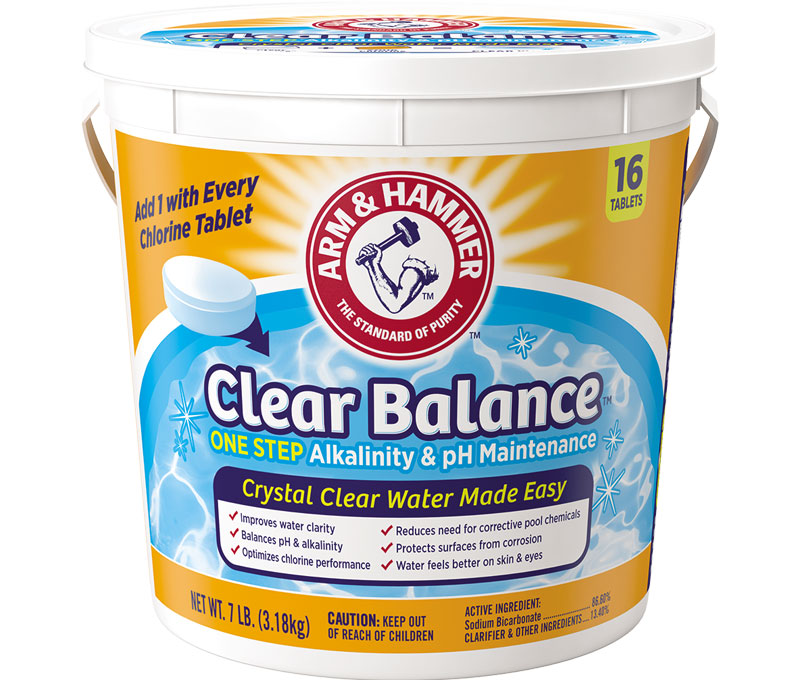Why is My Pool Green?
Green pool water can be caused by:
- Algae overgrowth
- Low chlorine levels
- Pool water pH over 7.8
- Excess pollen in the water
- Poor water circulation
- Filter not working or running long enough
- High phosphate levels
- A combination of these.
Pool Water is Green and Cloudy
If your pool is green and cloudy, it’s likely an algae problem. Algae can persist in a pool even after shocking. A green pool – especially one that turned green overnight or after rain, can also be from a pool pump that isn’t properly circulating water or an issue with your filtering system.
Pool Water Looks Green but is Clear
Clear pool water with a green tint may be from pollen, chlorine-resistant algae, or most often from a too-high pH level. When a pool’s pH is over 7.8, even high levels of chlorine destabilize and cannot sanitize, and metal in your water and pool components can oxidize, giving off a greenish hue.
How do I Fix a Green Pool?
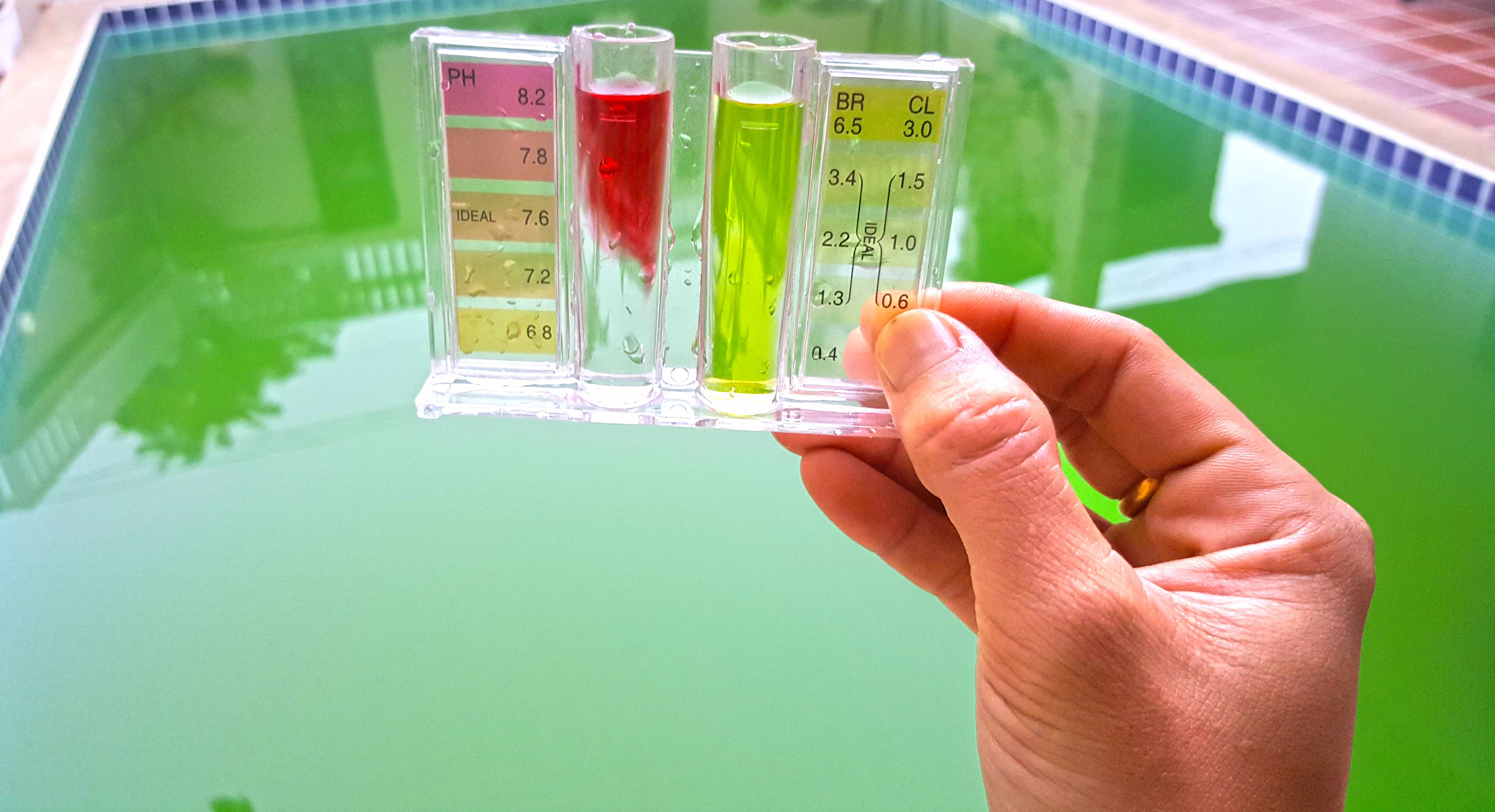
Most often, the remedy for a green pool is to shock it. To properly clear green pool water, you’ll need to clean the pool tiles, filters, and equipment thoroughly, add shock and algaecides, and rebalance your pool water. The entire process to fix a green pool usually takes a few days.
Follow these steps to know what to do to with cloudy green pool water:
- Vacuum the pool bottom and sides thoroughly, by hand, paying special attention to places where algae has built up.
- Brush the floor and walls of your pool with a stiff bristled brush to remove algae stains. Try adding baking soda to the brush or on the algae stain for a gentle abrasive that won’t scratch tile or fixtures.
- Check and clean your pool filters. They may have gotten especially dirty after filtering out loose algae from scrubbing. If you have slime from algae, start here first before vacuuming or scrubbing.
- Test and balance your pool’s pH. If the pH is too high, your chlorine won’t work effectively and too low your shock treatment will be compromised. Use our Pool pH Guide for more help understanding how to raise or lower pool pH levels.
- Test your pool’s alkalinity, free chlorine, and phosphorus levels. If you have a green pool with algae, it’s likely that your chlorine levels are low and it’s possible that your phosphorus levels are high. Use baking soda to raise your alkalinity levels if needed. Learn more about the importance of alkalinity to pool water balancing with our Pool Maintenance Tips.
- Add a superchlorinated shock treatment. Make sure to follow the directions and to add the proper amount to avoid undershocking. Note: even if you typically use non-chlorinated shock, you must use chlorine to fix green pool water from algae. Repeat with a second shock treatment for optimal results, especially if your water was very murky.
- Run the pool filters until the water turns clear. Depending on the levels of algae in your water, this could be several days. Add a pool clarifier if you want to help speed up the process, but let the filters run for at least 24 hours to pick up dead algae and allow the shock to fully dissipate in the water.
- Test and balance the pool water again. Pay special attention to pH, alkalinity, and chlorine/sanitizer levels. Low levels of chlorine will lead to future algae and the return of a green pool. Remember that properly balanced pH and alkalinity will ensure your chlorine is able to work as it should.
- Monitor your pool water daily. Ensure you keep your chlorine at proper levels. Try adding ARM & HAMMER™ Clear Balance™ Pool Maintenance Tablets to your pool care routine to help keep your pH and alkalinity levels balanced and support your chlorine.
Can You Swim In A Green Pool?
If you’re wondering whether you can swim in a green pool: it depends, but probably not. Dark, cloudy green pool water indicates an algae infestation, bacteria contamination, and compromised filtration. If your pool water is green and murky or slimy, do not swim in it.
If you’ve been working to clean your green pool but it’s still green tinted, test your pool water for bacteria, chlorine, and pH levels. If they’re within normal limits, and you have only spots of algae or a light green tint, it’s likely okay for swimming while the water continues to clear.
Maintain Your Clear Pool Simply with ARM & HAMMER™
- Follow the tips in our complete Pool Maintenance Guide to keep your pool clear and balanced all season.
- Use ARM & HAMMER™ Clear Balance Pool Maintenance Tablets weekly to help maintain stable pH and alkanity levels.
- Keep a pool maintenance-sized bag of ARM & HAMMER™ Baking Soda with your pool chemicals to raise alkalinity and pH of your pool water, or as a spot algae scrub when needed.
